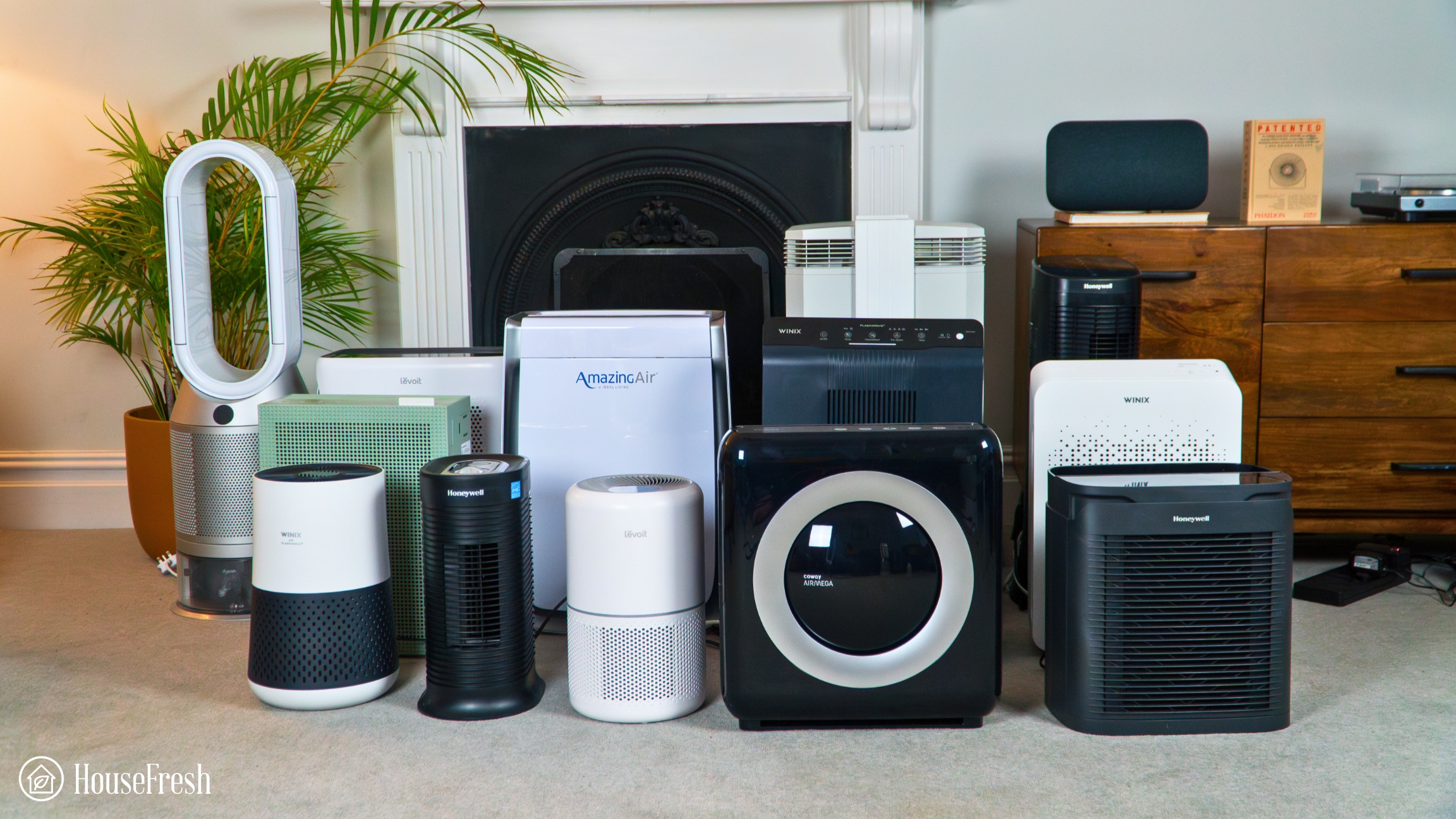When you buy an air purifier, it’s not only the initial price of the unit you need to keep in mind. They come with additional running costs that can add up if you choose the wrong air purifier for your space.
That’s why it’s crucial you research how much energy an air purifier needs before you purchase.
In this post, I’ll examine the factors that affect an air purifier’s energy consumption and teach you how to optimize its energy usage.

First, let’s look at the data collected from the air purifiers we purchased and tested for our HouseFresh product reviews.
As well as testing each air purifier’s cleaning performance, features, and sound levels, we use an energy meter to measure precisely how much electricity a unit uses at its lowest and highest fan speeds.
With all this data, we’ve calculated that the average electricity pull of the 60 air purifiers we tested on their highest fan speed is 57.69 watts.
The most energy-efficient unit we’ve tested so far is the Nukit Tempest. This DIY air purifier uses six PC cooling fans to pull air through two MERV 13 filters and when running at its top (and only) speed, it only consumes 8.8 watts!
Factors that affect an air purifier’s energy consumption
Specific factors determine how much energy an air purifier uses to remove contaminants from your home effectively. If you’re not using your air purifier correctly, it’ll use more energy than it needs and cost more to run.
1. Size matters
Air purifiers are designed to work in specific-sized spaces. Brands will generally use this specification as a selling point and market it. This specification is determined by measuring an air purifier’s cleaning performance, AKA Clean Air Delivery Rate (CADR).
The general rule is the higher the CADR, the more powerful the unit. However, not all rooms need an air purifier with a high CADR.
Larger units use more power, so introducing an air purifier that’s too big for your room will waste energy and cost you more to run than a unit suited to your space. On the other hand, running an air purifier that’s too small for your room means it won’t be able to clean your environment as intended.

In order to determine the performance of an air purifier, they’re tested to measure their clean air delivery rate. This standard measurement shows how much air a unit can clean over a period of time. The results are displayed in CFM (Cubic Feet per Minute).
If you want to know more about CADR, check out our in-depth post, “What is CADR rating?” where we go through everything you need to know about the metric in-depth.
You can use our CADR calculator to find out what type of air purifier you should be looking for depending on the size of the room where you are planning on using it.
2. Energy efficiency
Now you know what size air purifier you need for your room, it’s time to look at how much electricity each unit needs to run. The more electricity an air purifier uses, the more it costs, naturally.
Luckily, we live in an age where energy efficiency is a hot topic, and air purifier manufacturers compete to make their units as energy-efficient as possible. There are also strict criteria set by the U.S. Department of Energy that products need to follow.
If an air purifier passes these criteria, they’re awarded with an Energy Star certification. I highly recommend checking a unit’s Energy Star status before purchasing it so you don’t get stuck with a costly investment.

Every certified air purifier is listed on the Energy Star website, where you can check a unit’s specifications and compare them with others.
3. Filter type
To compete in the merciless air purifier market, brands need to be the best. This means engineering the latest advancements in filter technology to remove pollutants from your home.
Air purifiers constantly work to remove airborne contaminants. If the filter isn’t trapping them, the unit has to move more air for multiple passes, which means using more energy to power its fan.
The more effective the filter, the more energy-efficient the air purifier.
When choosing an air purifier for your home, be sure to research what type of filters it uses. I personally advise you find an air purifier that contains HEPA filters, as they’re highly effective at eliminating microscopic pollutants.

How to optimize your air purifier’s energy usage
So, you’ve bought the right-sized, Energy Star-certified, and high-grade HEPA filter air purifier. Woo-hoo! Go you. Now, read these do’s and don’ts to ensure your air purifier isn’t unnecessarily siphoning electricity.
What you should do
What you should avoid
Replacing a filter is generally a painless task.
We have step-by-step instructions on our product review pages and have an entire playlist on the HouseFresh YouTube channel dedicated to this process.
Many units have a filter replacement indicator light that will illuminate when your unit needs a new filter (some even have a filter lifespan monitor if your product has an app). As soon as you see this light, buy a new filter and install it as soon as possible.
Wrapping up
Doing a little research into which specifications you need from an air purifier will save you $$$ when that bill comes in.
- Find an air purifier with a CADR that matches your space
- Check how much electricity it uses on Energy Star
- Pick a unit that contains HEPA-type filters
- Take steps to optimize the energy usage of your air purifier
SOURCES
- Energy Star. (2024). ENERGY STAR Certified Room Air Cleaners. energystar.gov
- Perch Energy. (2022). What Appliances Use the Most Electricity in Your Home?perchenergy.com





